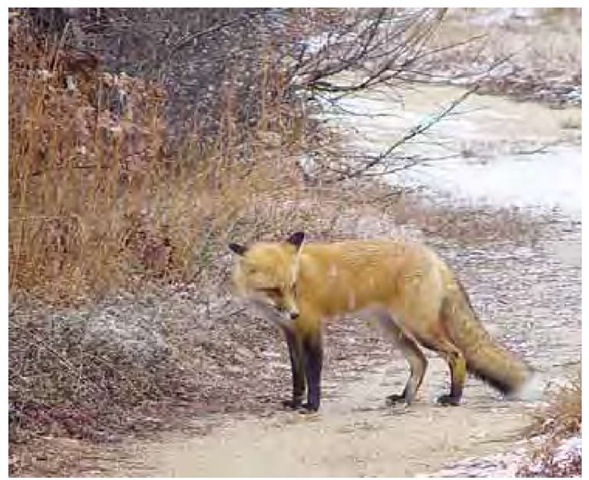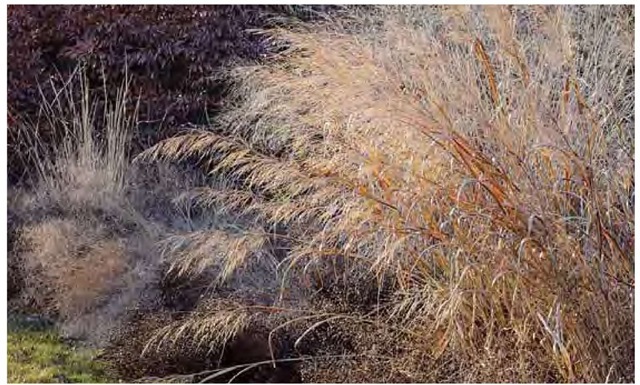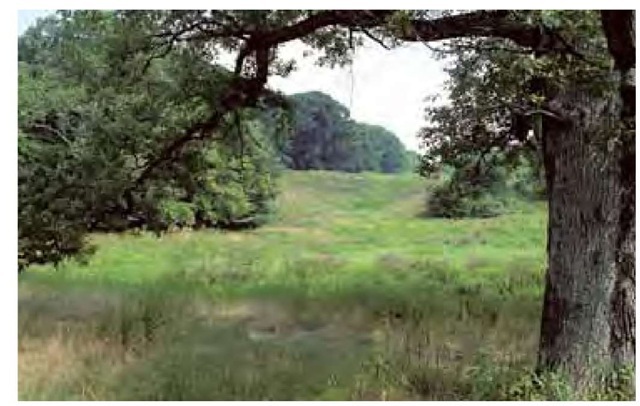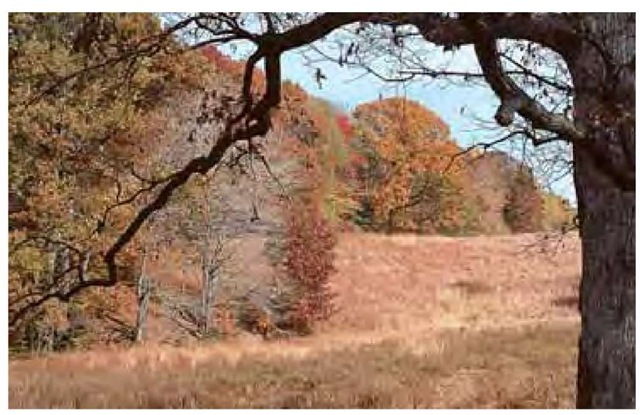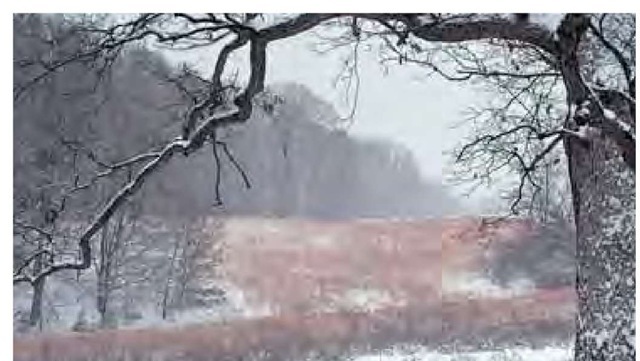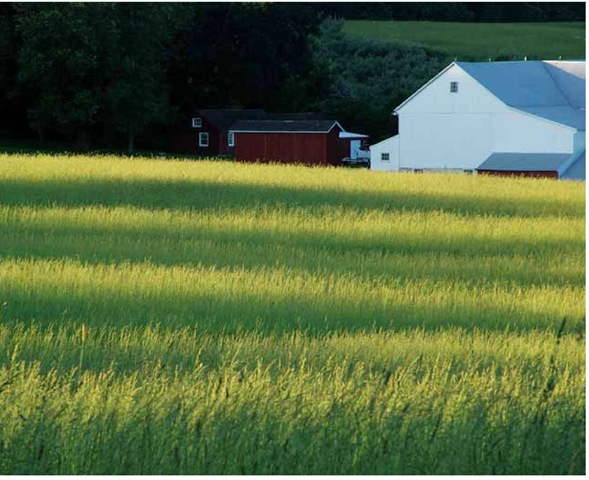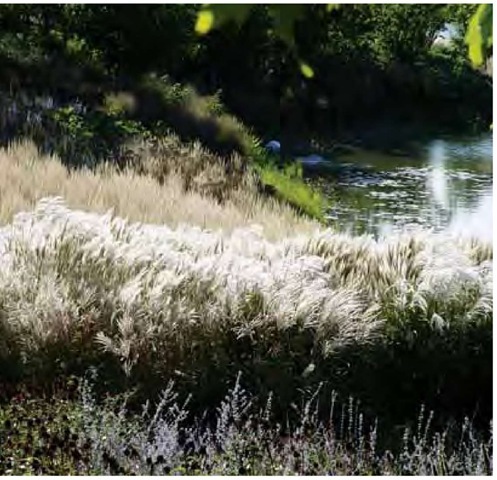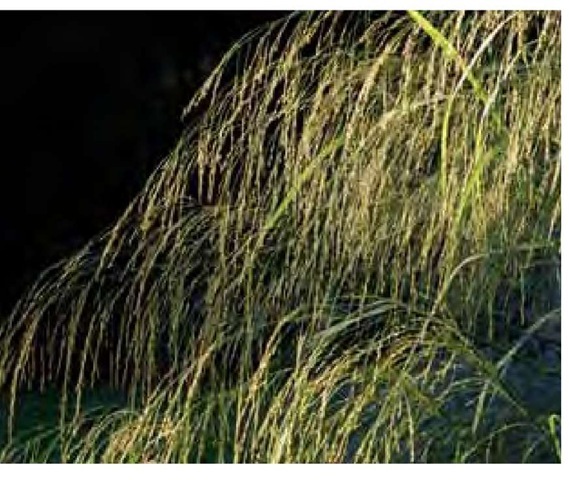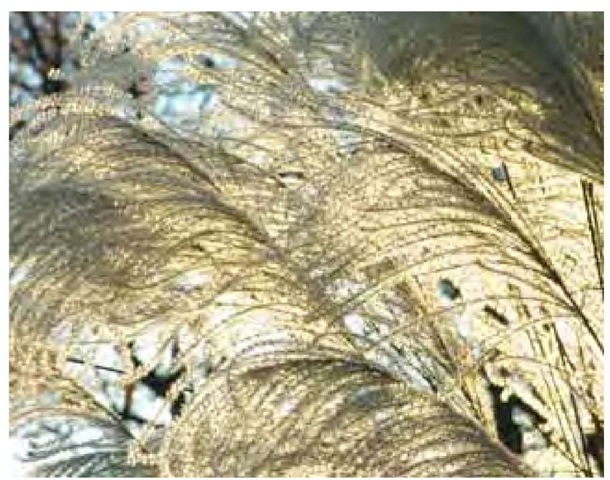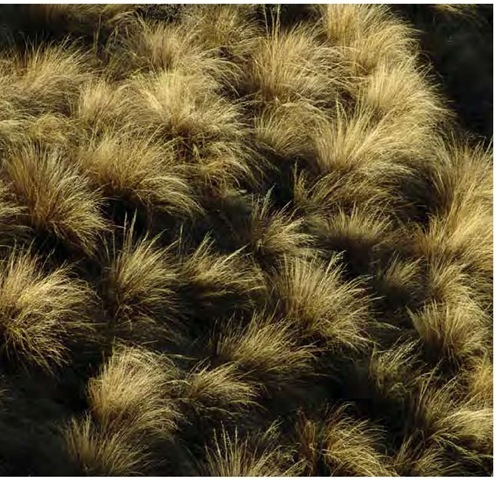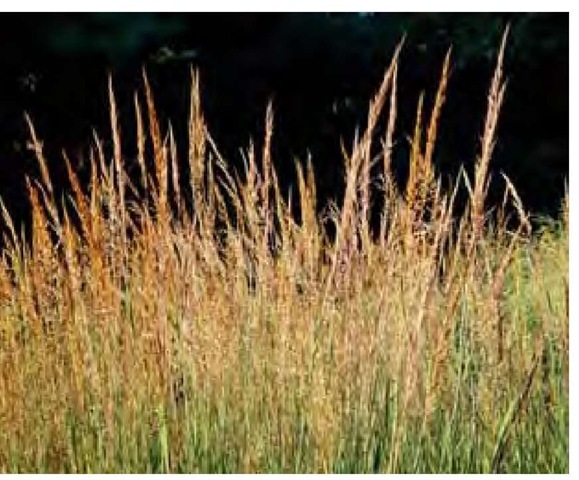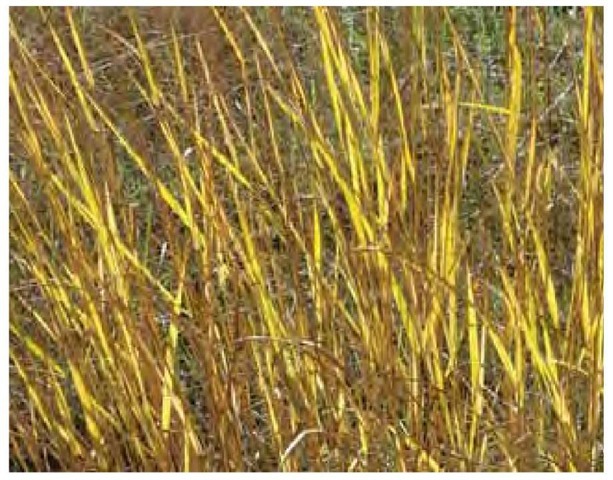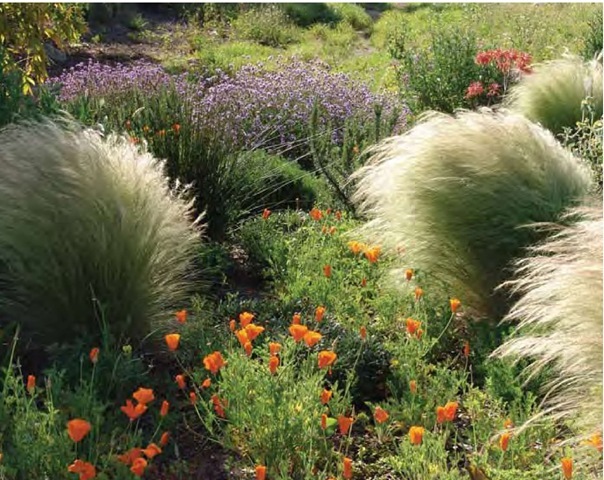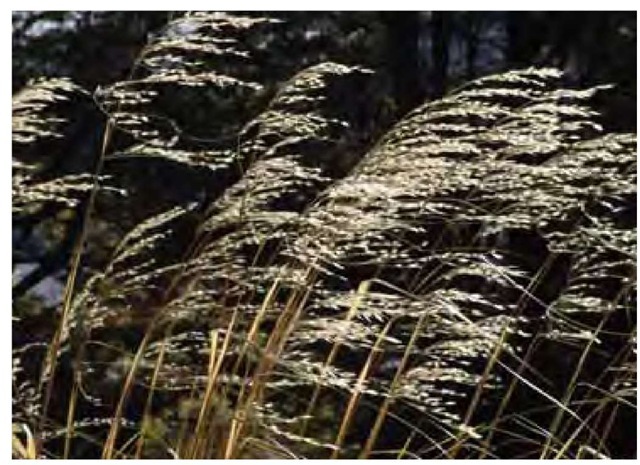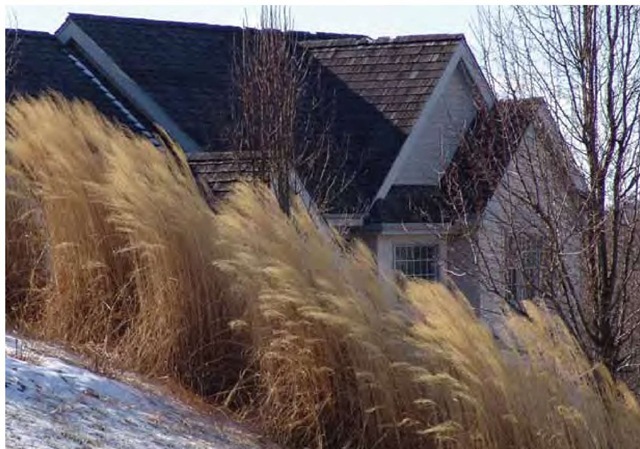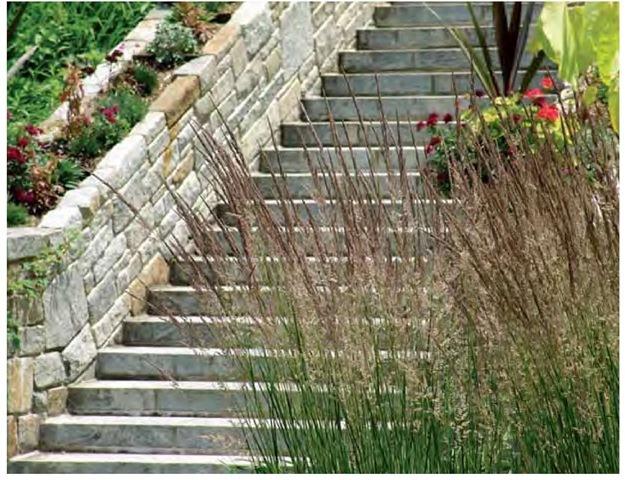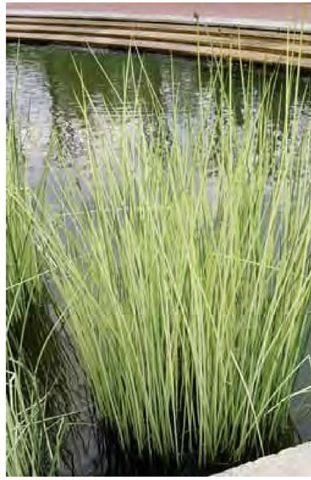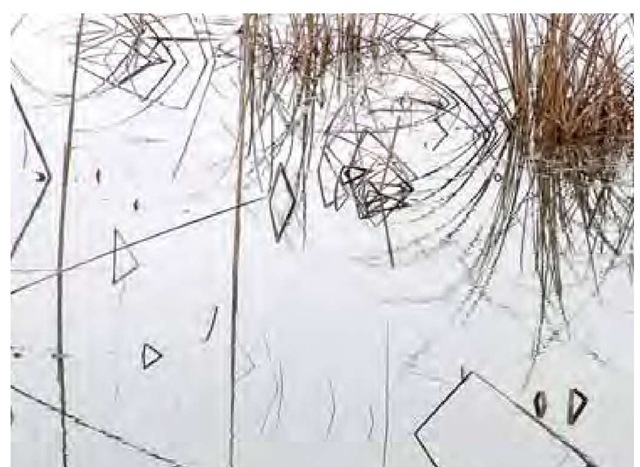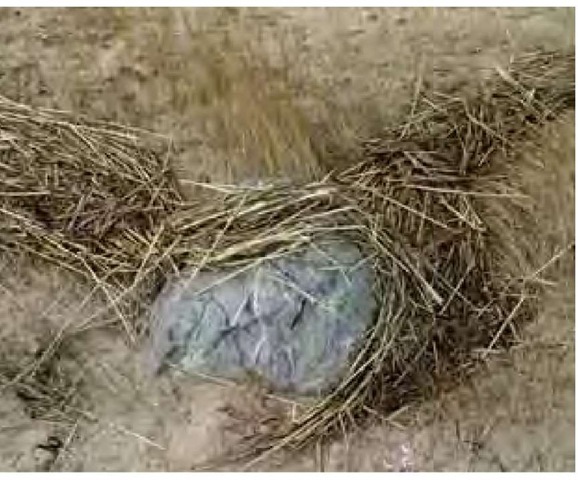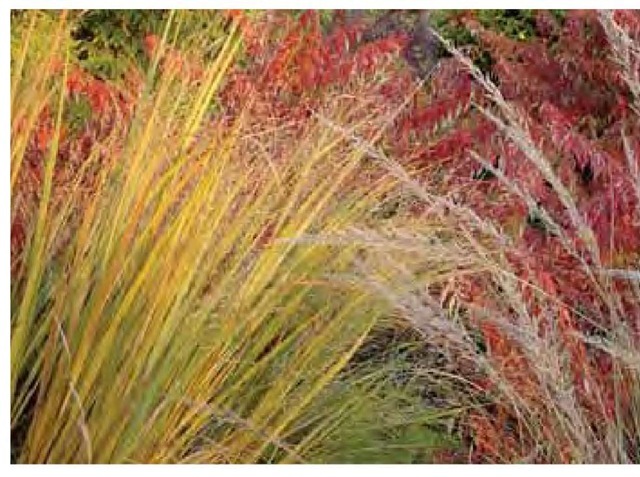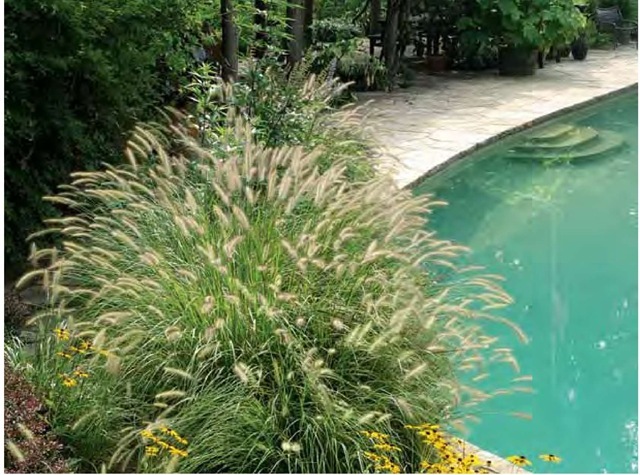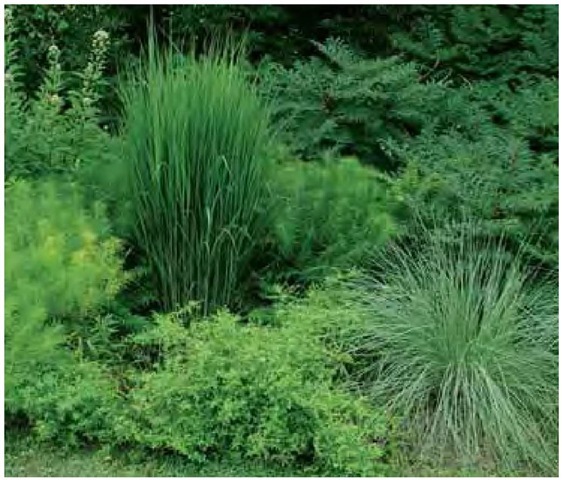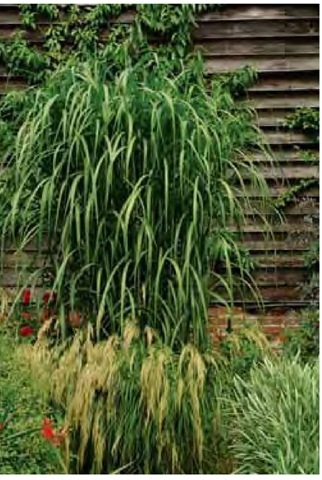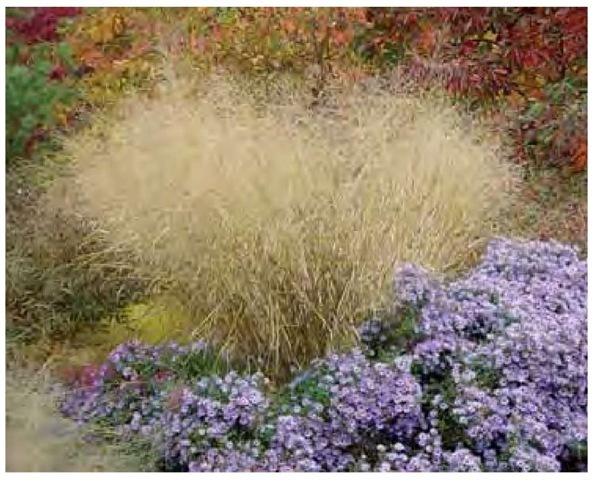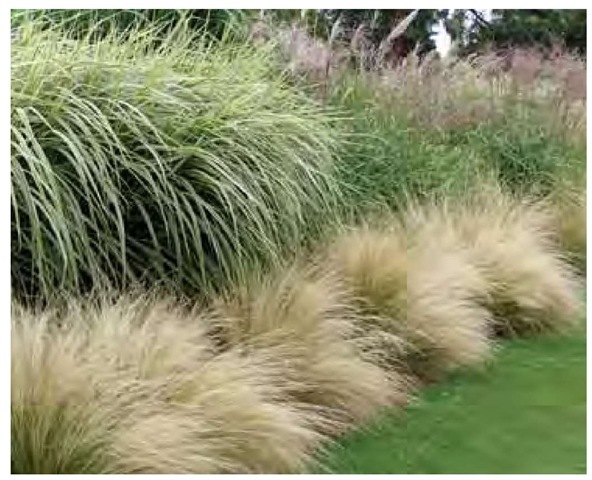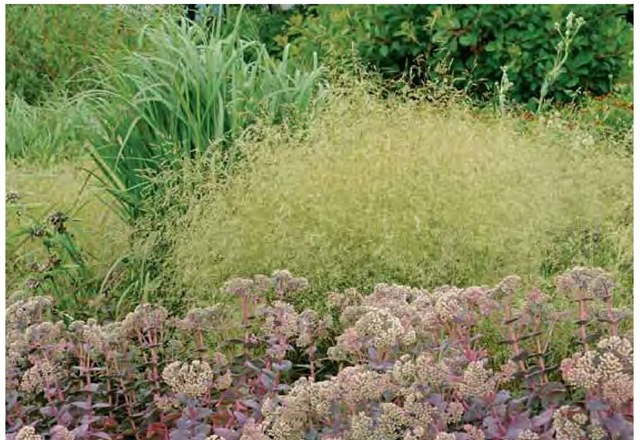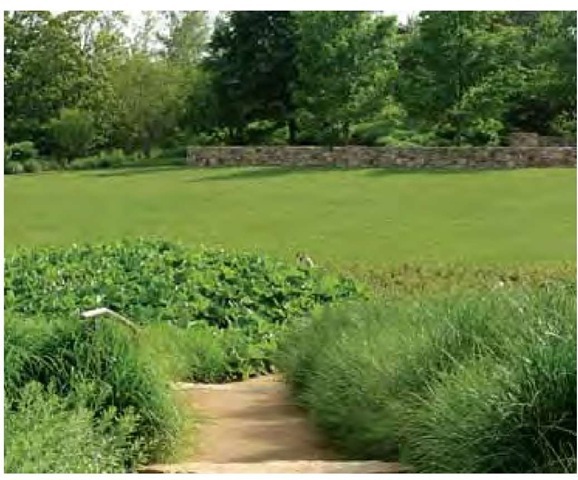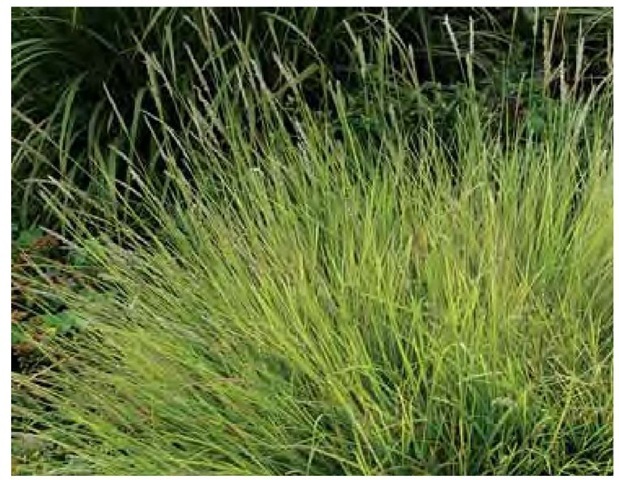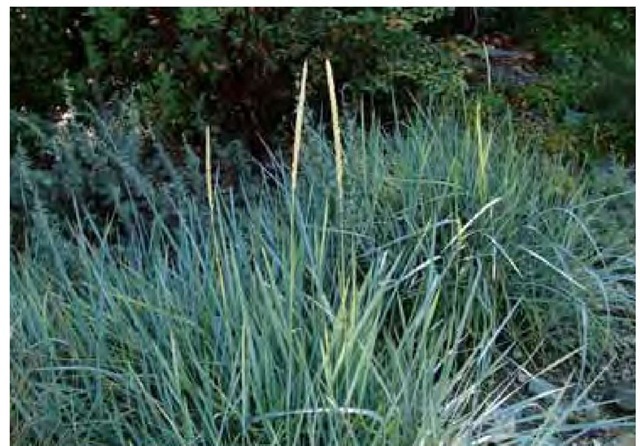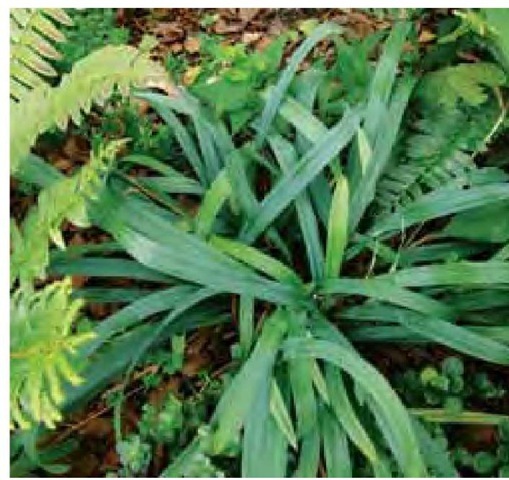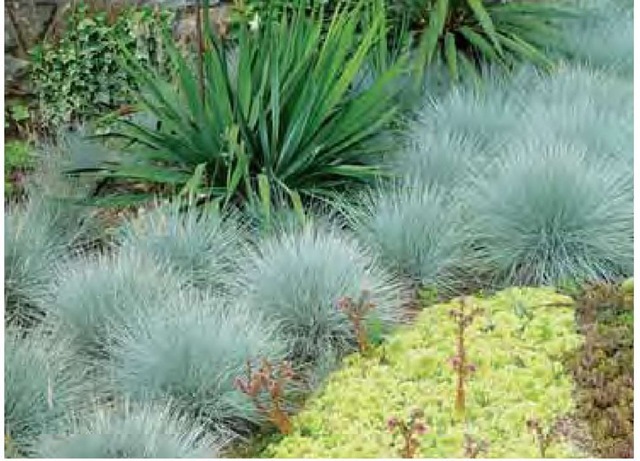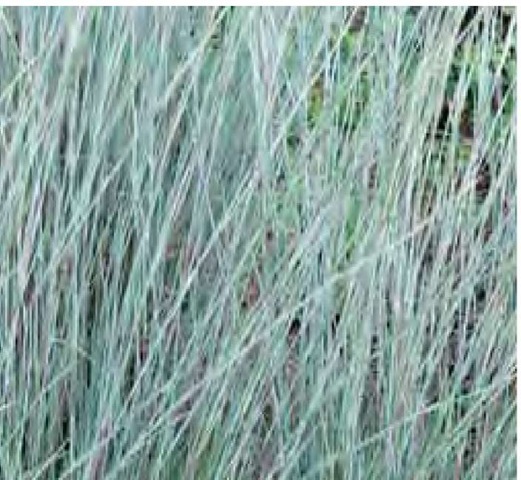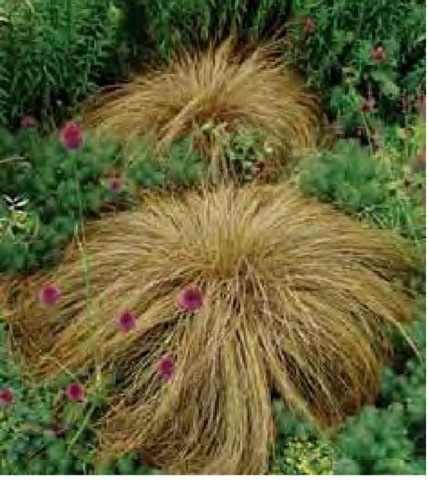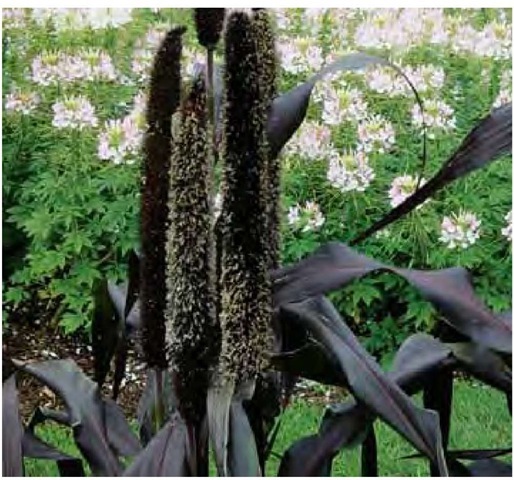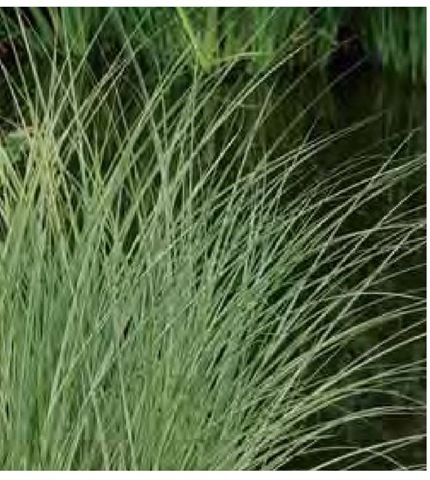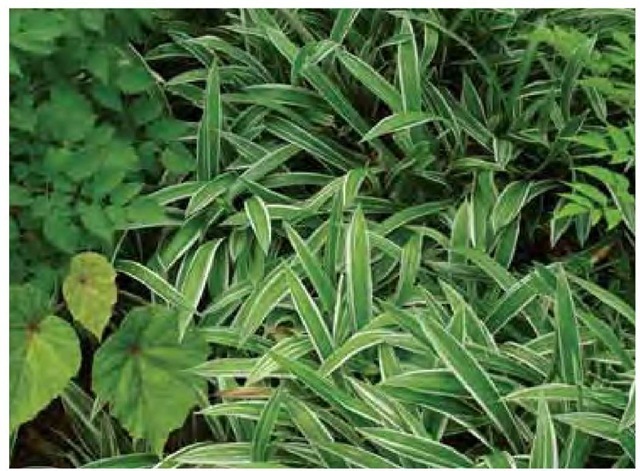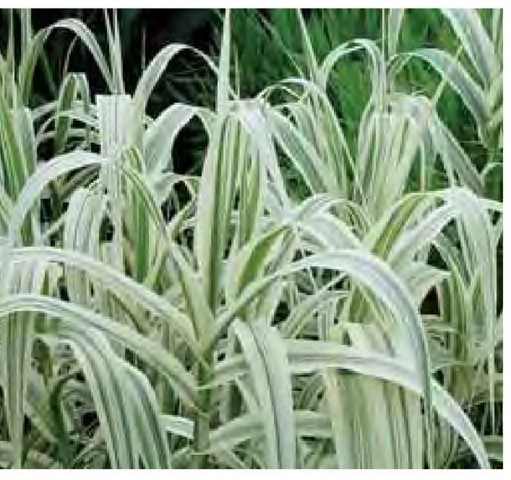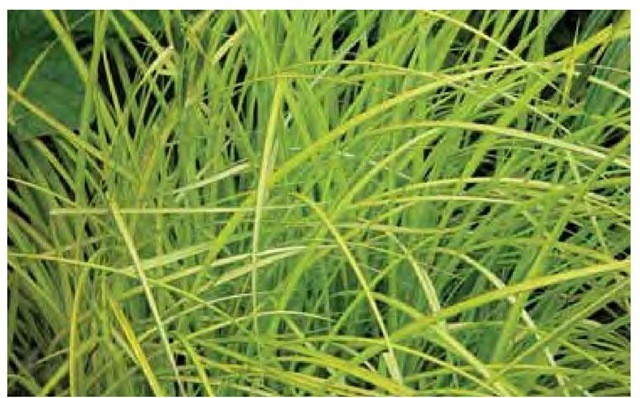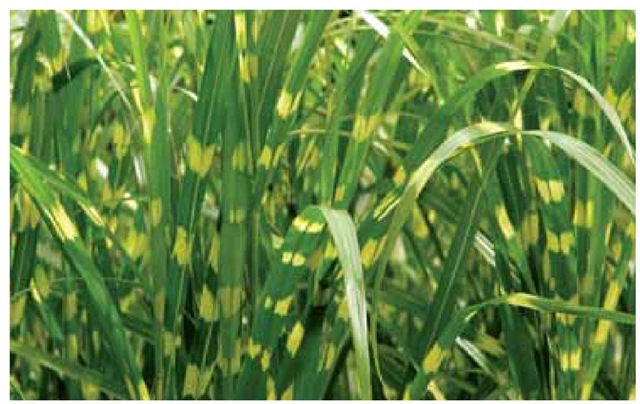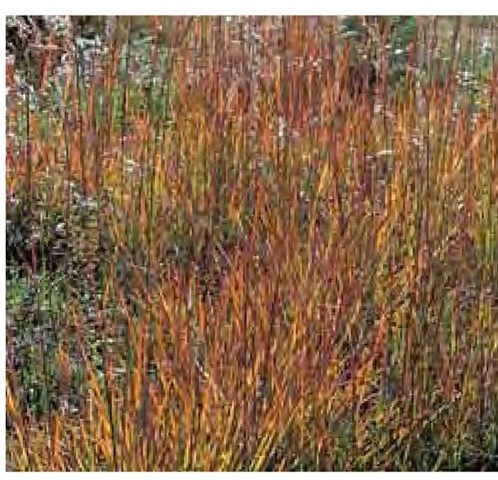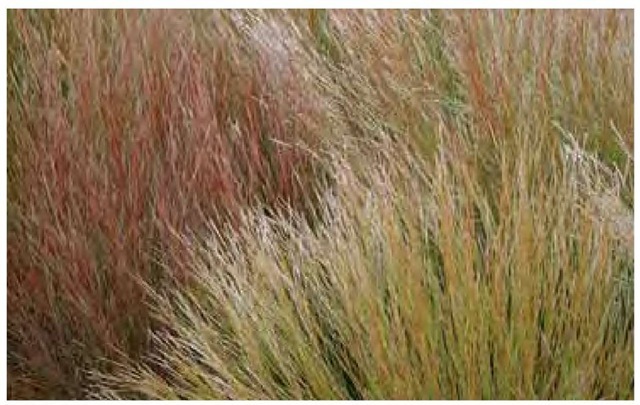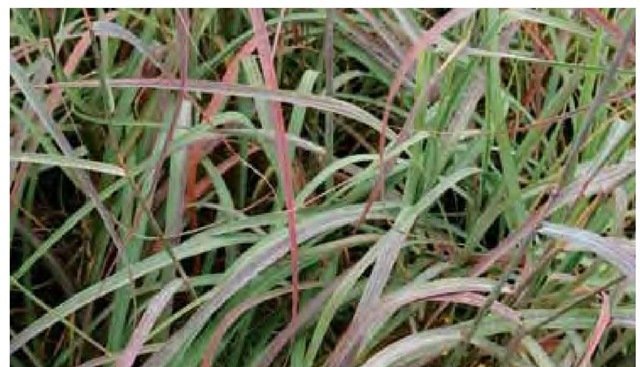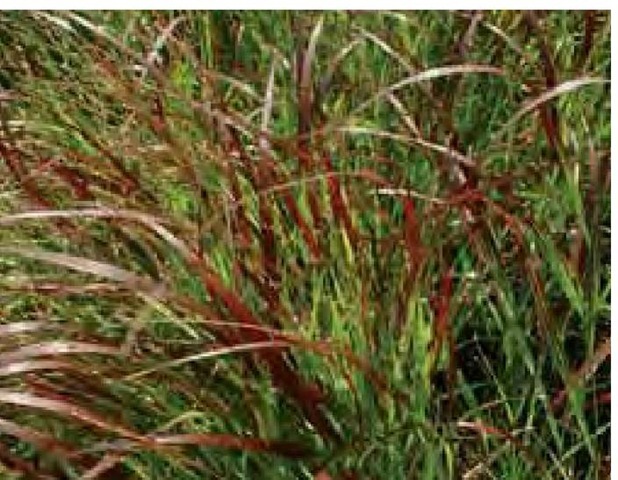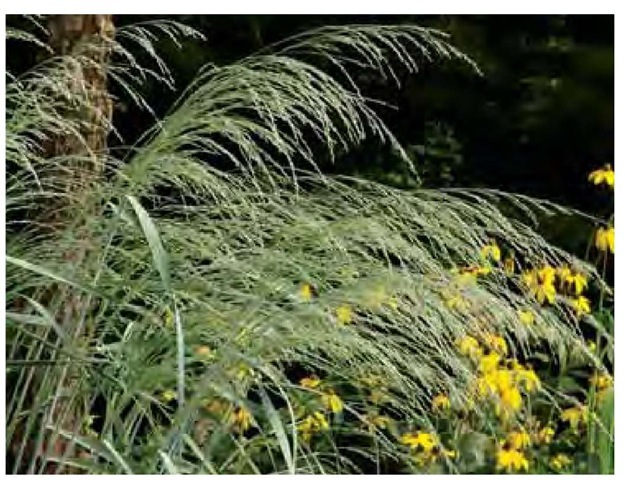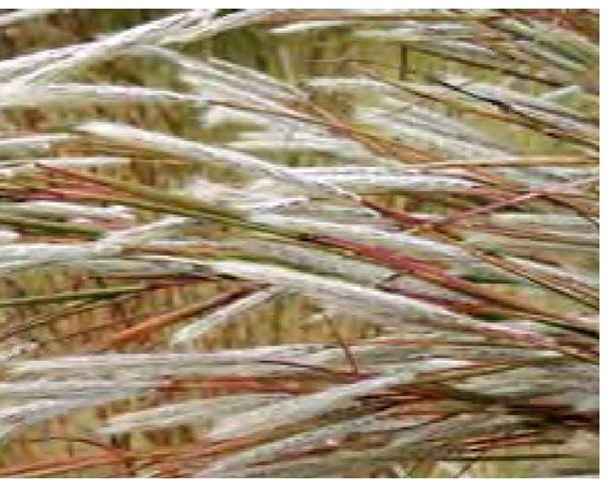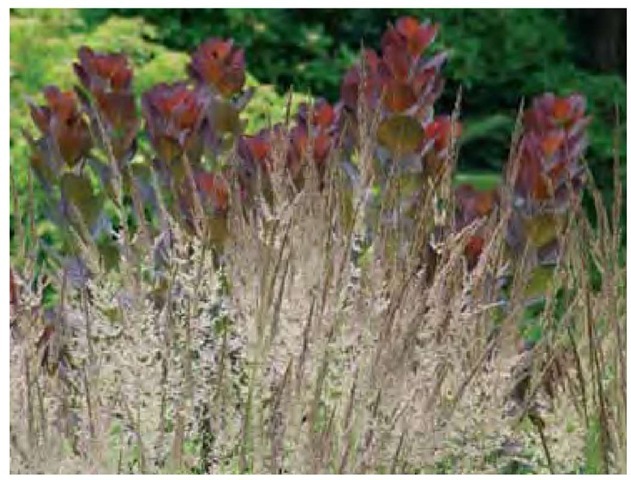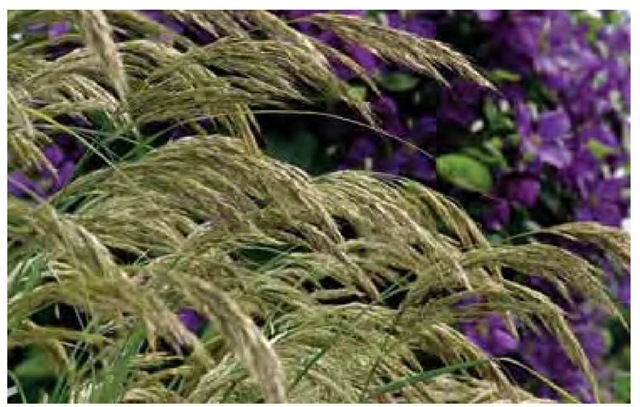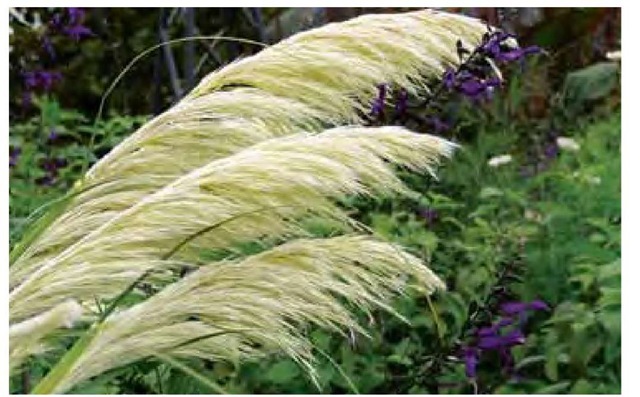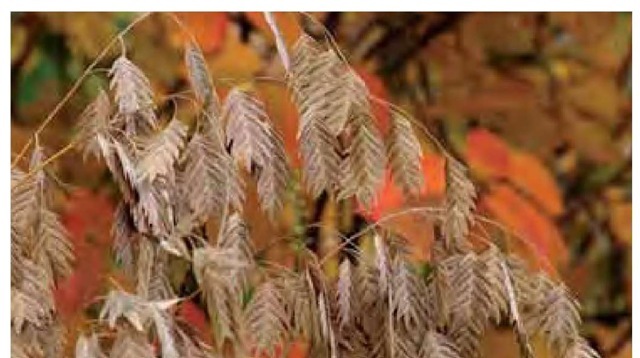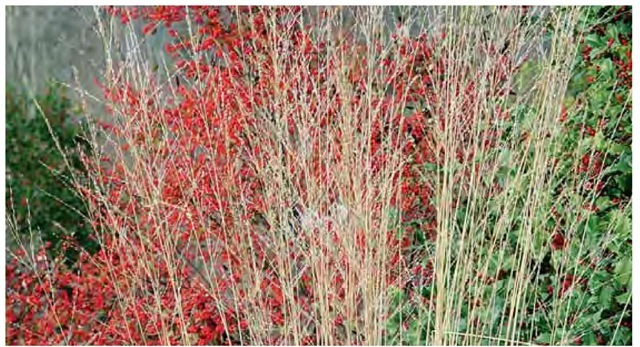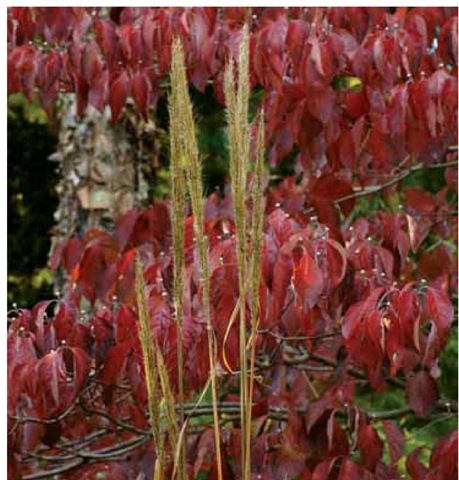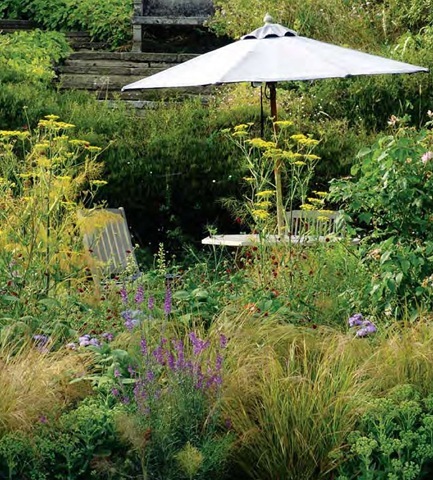MARGARET PLUES MAY HAVE BEEN a bit premature with these words 140 years ago, but her thoughts are fitting now. Pioneers in both the ecological and visual senses, grasses have finally gained a firm foothold in the fields of horticulture, landscape design, and conservation.
The aesthetic appeal of grasses is indeed unique. Their colors, though often less saturated than those of traditional garden plants, are softly sophisticated and remarkably varied. Beyond color, grasses offer a wealth of beauty and interest derived from translucency, line, form, texture, scale, sound, movement, and seasonal dynamics. Some of these characteristics are readily apparent to the casual eye, and others are revealed through thoughtful observation. Developing an awareness of grasses’ unique attributes is sure to enrich your experiences with them, in both the garden and the larger landscape.
This obliging red fox stood for my camera in a late-December snowstorm in North Truro on Cape Cod. Every color in its coat is reflected in the winter landscape: the near-black of wet twigs, the ivory and white of sand and snow, and the ruddy hues of oak leaves and dormant grasses (little bluestem, Schizachyrium scoparium). Too often we dismiss such scenes as colorless, yet this fox helps us see they are anything but that. Landscape historian John Stilgoe has written about the enduring rewards of developing “visual acuity”: the ability to see sharply both detail and context. Learning to discern and understand the color roles of grasses in seasonal landscapes is a fine example.
Switchgrass, Panicum virgatum ‘Dallas Blues’, and other grasses add their warm hues to a late-February day in the author’s Pennsylvania garden. The color balance of this winter composition is similar to that of surrounding fields and woodland edges, and helps reinforce the garden’s connection with them.
The camera can teach us a great deal about gardening and landscape design, especially because of its ability to record pattern and reveal process. Framed by the same white oak, Quercus alba, these three photos of broom-sedge, Andropogon virginicus; little bluestem, Schizachyrium scoparium; and Indian grass, Sorghastrum nutans, illustrate the seasonal cycle of local warm-season grasses in the eastern North American landscape.
The summer landscape is still mostly green in August as blooming grasses add their gold and copper tones
By late October the grasses have finished flowering and set seed. Their foliage has become a rich mix of straw, salmon, and russet hues, complementing the gold and red colors lingering in the autumn foliage of deciduous trees. The oak’s dark frame offers dramatic contrast.
January snow cover reveals the grasses as now the most colorful aspect of a winter landscape that is otherwise a study in dark browns, grays, and charcoal. Welcoming such local colors, patterns, and processes into our aesthetic is a necessary step in the development of a locally grounded design and conservation ethic.
Luminous Qualities
Few plants can match the luminous drama of the grasses. Their highly translucent flowers and foliage are set aglow by even the softest sunlight, and when strongly sidelit or backlit they present some of the most stunning displays encountered in any landscape. These radiant effects are in play year-round, but are perhaps most welcome in late autumn and winter when accentuated by the sun’s low-angle rays. Luminous grasses bring vibrancy to the landscape at times when typical flowering plants are at low ebb.
This Pennsylvania hayfield is a grand study in sunlight and shadow in late May, illustrating the luminous drama possible from even the simplest grasses.
Sweeps of Miscanthussinensis and feather-reed grass, Calamagrostis xacuti-flora ‘Karl Foerster’, at the Chicago Botanic Garden are illuminated by the early October sun.
Sidelit by the mid-September sun and backed by shadow, the finely detailed inflorescence of switchgrass, Panicum virgatum ‘Prairie Wind’, is incandescent in the author’s Pennsylvania garden
Miscanthus sinensis ‘Graziella’ backlit by the mid-November sun in New York State. Fine hairs present in the inflorescences of many true grasses contribute to their luminous potential.
Late-afternoon sun reveals the pattern of red tussock, Chionochloa rubra, on a mountain slope in New Zealand’s Southern Alps at the end of August (winter). Although their clump pattern seems regular and contrived, these grasses are naturally occurring.
Spikelike inflorescences of Lind-heimer’s muhly, Muhlenbergia lindheimeri, are set off by late-October sunlight and the dark red foliage of sumac, Rhus glabra ‘La-ciniata’, in the author’s Pennsylvania garden.
left Inflorescences of Indian grass, Sorghastrum nutans, appear flamelike when backlit by the early September sun in the author’s Pennsylvania garden.
Sunlit switchgrass, Panicum virgatum, in a Long Island meadow in late October demonstrates the radiant quality of grass foliage.
Sound and Movement
Grasses are the first to tell of each caressing summer breeze. Their lissome stalks and flowers flutter and bow, dancing before every spring gale, every autumn storm, every winter wind. Supple and sinuous, they paint portraits ol the wind. As they move, they sing in tones ranging from a low whisper to a low rustle, to a staccato rattle. Their sound and movement add immeasurably to the vibrancy of any garden and to its resonance with the larger landscape. A window view on grasses dancing in the distance will often serve as a gentle beckoning to abandon indoors for out.
Mexican feather grass, Nassella tenuissima, soaks up the California sun at Seaside Gardens in Carpinteria, in early April. Literally soft and pliant as a feather, this graceful grass is almost constantly in motion.
Sunlit seed stalks of snow tussock, Chionochloa favescens, flutter furiously in a powerful wind in August (winter) in New Zealand’s Southern Alps.
Easily viewed from multiple windows, this storm-tossed sweep of Miscan-thussinensis ‘Gracillimus’ is a literal portrait of northern Delaware’s winter winds.
The Quality of Line
Grasses are among the most architectural of all herbaceous plants, largely due to their strength and quality of line. Both foliage and flowers contribute to the linear presence of grasses, which can be subtle or even monotonous in excess but is visually stunning in association with contrasting elements in the landscape: water, stone, sky, and the built environment. The lines of some grasses are strictly vertical, others are sharply ascendant, and still others follow gentle
The linear strength of feather-reed grass, Calamagrostis xacutiflora ‘Karl Foerster’, is both a match and a foil for a stone staircase at Chanticleer in Wayne, Pennsylvania, in late June.
Graceful arcing lines are characteristic of cordgrass, Spartina pectinata ‘Au-reomarginata’.
Though the lines of most grasses are parallel, some, such as those of this feather grass, Stipa barbata, in Beth Chatto’s garden in Colchester, England, are complex and nearly free-form.
The vertical lines of white bulrush, Schoenoplectus tabernaemontani ‘Albescens’, contrast with the water’s surface and the masonry coping in this pool at the Chicago Botanic Garden in early June.
Secondary lines created by reflection and shadow are part of the allure of grasses’ linear character. An arcing stalk of bulrush, Schoenoplectus tabernaemontani, creates the illusion of a completed oval in this pond in Karl Wienke’s garden in Suhl, Germany.
Last season’s cattails, Typha latifolia, are a study in linear abstraction as mirrored in a Texas swale in early April.
The linear drama of grasses plays through all seasons. Miscanthus shadows are etched on a snowbank in Newport, Rhode Island, in late January.
Reminiscent of artist Andy Goldsworthy’s work, this is only the result of the tides working with salt marsh grasses (including Spartina species) along Robert’s Cove on Cape Cod, Massachusetts, in late December. The defining lines of grasses often record the subtle stories of local landscapes
Crossing lines of Panicum virgatum ‘Northwind’ foliage and Muhlenber-gia lindheimeri flowers create visual intrigue in early November in the author’s Pennsylvania garden.
Form, Texture, and Scale
As with line, grasses are diverse in form, texture, and scale—characteristics which are of much greater importance when working with plants whose primary strength is not color. Grasses do come in practically all shapes and sizes, including tightly tufted mounds, gracefully spilling fountains, irregular cascades, and nearly vertical pillars. Their textures range from feather-fine to coarse-as-corn. The smallest grasses never exceed one foot (30 cm) in height, while others grow nearly 15 feet (4.6 m) tall in a single season. Many of these characteristics vary with climate and local growing conditions. A grass that is strictly upright when sited in droughty sand and full sun may be lax or pendant in moist shade and rich organic soil. The size and height of grasses can also vary tremendously with available light, moisture, and nutrients.
Aptly named fountain grass, Pennisetum alopecuroides retains a rounded, fountainlike form from foliage through flowering, as pictured at Ashland Hollow in Delaware in mid August.
Moving the emphasis away from color profoundly changes the visual equation. In late July this south-facing border in the author’s Pennsylvania garden is a study in texture and form. The upright stance, vertical lines, and relatively coarse texture of Panicum virgatum ‘Northwind’ (at left), a reliably upright cultivated variety of switch-grass, set it apart dramatically from aromatic aster, Aster oblongifolius (below it); thread-leaf bluestar, Amsonia hubrichtii (flanking it); and cutleaf smooth sumac, Rhus glabra ‘La-ciniata’ (backing it). The form of ‘Northwind’ will change very little when it flowers: it will remain mostly columnar. Although Lind-heimer’s muhly, Muhlenbergia lindheimeri (at right), is slightly bluer than its companions, it stands out in the composition primarily because of its fine texture and rounded form.
Three months later the same Muhlenbergia lindheimeri has morphed into a different form and is now upright-arching in flower. Many grasses change shape dramatically when they bloom.
Giant miscanthus, Miscanthus xgiganteus, towers over silver spike grass, Achnatherum calamagrostis, in an elegant composition at Great Dixter in Northiam, England, that is all about line, form, texture, and scale. Although both grasses have pendant lines, the miscanthus reads primarily as a vertical form. Its size and relative coarseness work well against the horizontal barn boards.
A slowly running grass, Ha-konechloa macra ‘Albovariegata’ is shaped like tumbling waves in late May in the author’s Pennsylvania garden.
Scale and texture can be independent of one another. Though many of the smallest grasses are relatively fine-textured, the largest grasses vary from fine to coarse. Diffuse and cloudlike in form, Panicum virgatum ‘Cloud Nine’ stands more than 6 feet (2 m) tall in late October in the author’s Pennsylvania garden, yet its texture is exceptionally fine.
The grass collection at the Royal Botanic Gardens, Kew, in England is a wonderful place to study the diversity in form, texture, and scale encompassed by the grasses. In this late-August photo, low, ultra-fine-textured Mexican feather grass, Nassella tenuis-sima, skirts a border filled with multiple varieties of Miscanthus sinensis.
Tufted hair grass, Deschampsia cespitosa ‘Goldtau’, has the texture of soft clouds drifting through Piet Oudolf’s borders at the Royal Horticultural Society’s garden, Wisley, in Surrey, England, in mid July.
Changes in form, texture, and scale of grasses over the growing season often result in similarly dramatic changes in the landscape itself, as demonstrated by two views of the same path at the Chicago Botanic Garden in Illinois.
In early June Miscanthus ‘Purpura-scens’ (left) and M. sinensis ‘Ferne Osten’ (right) are a low, soft green presence edging the path.
Four months later, in early October, the grasses have tripled in height and are now luminous and upright, literally defining the path.
Color Diversity
The color diversity of grasses begins with green. Though green may be a single color, it can be infinitely variable in tint, shade, and saturation, and many such variations are found among the grasses. Grasses and their relatives include light greens and dark greens, soft greens and hard greens, gray-greens, yellow-greens, and, perhaps most frequently, blue-greens. Much of the blue we perceive in grasses is due to a thin waxy coating on green leaves and other parts that refracts sunlight to give the appearance of blue color. The “bloom” on grapes is another example of this waxy or glaucous finish. Glaucous blues are dynamic: they vary with the quality of sunlight.
Representing one of the innumerable green hues found among the grasses, Sesle-ria argentea is chartreuse in mid August in northern Germany.
The glaucous foliage of giant wild rye, Leymus condensatus ‘Canyon Prince’, appears especially blue in shadow and early morning June light in San Luis Obispo, California.
Representing one of the innumerable green hues found among the grasses, Sesle-ria argentea is chartreuse in mid August in northern Germany.
Beyond green, grass colors extend to red, orange, pink, and purple, with myriad variegated grasses adding real yellow, ivory, and white. Many of these colors shift dramatically with the seasons. Cool weather often induces pink or purple suffusions to white and blue. Autumn in temperate regions and dry periods in Mediterranean climates can transform the most mundane green to exuberant apricot and gold. Winter or dry dormancy augments the color spectrum with quieter but sublime hues ranging from fawn through chestnut and russet, and the dry, translucent parts of flowers and seedheads are often imbued with the varied tones of sunrises and sunsets.
Stunningly distinct from the green of a yucca and the light yellow of sempervi-vums, Festuca glauca ‘Elijah Blue’ is among the bluest of the blue fescues
Blue oat grass, Helictotri-chon sempervirens, is a steady, light blue year-round in many climates.
Grass foliage and flowers are often imbued with secondary colors, as with the red-purple segments on the otherwise light blue stems of little bluestem, Schizachyrium scoparium ‘The Blues’.
Brown but not dead, Carex flagellifera, seen here in England in late July, is one of many New Zealand sedges with evergreen foliage that is anything but green. Colors of these sedges range from copper through cinnamon, orange, and red.
Orange sedge, Carextestacea, is true to name in early April in Southern California.
Japanese blood grass, Imperata cylindrica ‘Red Baron’, is wine-red against a background of blue wheatgrass, Elymus magellanicus, in Southern California in mid August.
Purple millet, Pennisetum glaucum ‘Purple Majesty’, is one of a few dark purple pennisetums which are grown as annuals in cold climates.
Miscanthus sinensis ‘Morning Light’ is among the most subtle of variegated grasses. Thin white-variegated edges on the narrow leaves result in an overall light green or gray-green appearance.
Boldly variegated leaf margins on broad-leafed sedge, Carexsiderosticha ‘Variegata’, produce a two-tone effect.
Giant reed, Arundo donax ‘Variegata’, is so strongly variegated it appears mostly white.
The leaves of Bowles’ golden sedge, Carexelata ‘Aurea’, are yellow variegated with green edges.
The banded variegation of zebra grass, Miscanthus sinensis ‘Zebrinus’, produces a color effect evocative of tropical foliage.
In mid October in Pennsylvania, the autumn color of Indian grass, Sorghastrum nutans, rivals that of many trees and shrubs.
Variations in summer foliage color often correspond to variations in autumn and winter foliage colors. These seedlings of little bluestem, Schizachyrium scoparium, were various shades of blue and blue-green during the growing season. Here, in late September in Nebraska, the summer greens have turned copper and the summer blues are dark orange-red.
Light blue all summer long, the basal foliage of Andropogon ‘Sanbi’, a hybrid selection of A. gerardii and A. hallii marketed with the name Silver SunriseTM, is strongly tinted dark pink and purple in late October in North Carolina.
The foliage of red switchgrass, Panicum virgatum ‘Shenandoah’, turns purple-red in early September in Delaware.
Blue hues sometimes carry through the inflorescences, as with coastal switch-grass, Panicum amarum ‘Dewey Blue’, photographed in early August in the author’s Pennsylvania garden.
The secondary colors in grass inflorescences are often strong enough to resonate with colors in the surrounding landscape. In mid October in southern Delaware, flowering stalks of split-beard bluestem, Andropogon ternarius, are silver, amber, green, and red.
The color impact of pink muhly grass, Muhlenbergia capillaris, is unusual among grasses. Clouds of vibrant purple-pink flowering stalks are eye-arresting in early July in North Carolina.
Inflorescences of feather-reed grass, Calamagrostis xacutiflora ‘Karl Foer-ster’, undergo a startling shape and color transformation in a matter of weeks.
In June the flowering stalks are suffused with dark purple, which is accentuated by the purple smoke-bush, Cotinus coggygria, at Chanticleer in Wayne, Pennsylvania.
In late July the flowering stalks have constricted and turned a dark honey color, contrasting with a blue star sea-holly, Eryn-gium.
The relatively subtle hues of grass flowers and seedheads are often important for the revealing contrast they offer with other colors in the landscape.
The rich purple of a clematis is all the more effective when framed by the quiet tones of silver spike grass, Achnatherum cal-amagrostis, in mid August at the Royal Horticultural Society’s garden, Wisley, in Surrey, England.
Freshly opened in August at Wisley, the nearly white inflorescences of pampas grass, Cortaderia selloana, accentuate the dark purple-black flowers of Salvia mexicana.
Wheat-colored spike-lets of wild-oat, Chasmanthium latifolium, are set against the pumpkin-orange color of Fothergilla gardenii in early November in the author’s Pennsylvania garden.
Dried to the color of light straw by mid November, the seed stalks of tall purple moor grass, Molinia caerulea subsp. arundinacea ‘Skyracer’, dramatize the rich red and green of hollies at Chanticleer in Wayne, Pennsylvania
The burgundy foliage of flowering dogwood, Cornus florida, reveals the delicate vertical stalks of bent-awn plumegrass, Saccharum contor-tum, in the author’s Pennsylvania garden in early November.
